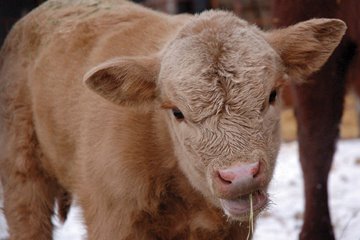
by Matthew Wright
For Kevin Peterson, as well countless other agricultural producers in Manitoba, this has been a summer unlike any other.
Now 34, the Bifrost area cattle producer who has been involved in the family business since he was old enough to help out, said he’s never seen the amount of flooding that has occurred in these parts. For him, it means that feeding his 100 cattle has become a serious concern.
“I usually produce 1,400 bales of hay for feed, but if you look in that field, the second cut has already come through where those bales are still sitting in water,” he said pointing to about 200 bales that he cut but is unable to retrieve because he can’t get any machinery into the pasture it’s so wet.
Alf Warkentin, manager of flood forecasting coordination at Manitoba Water Stewardship said that rainfall in some parts of the Interlake is more than double the normal amount.
“Some areas received up to 150 mm of rain in August. The norm for that period is usually around 65mm,” he said.
Warkentin pointed out that the RM’s of Armstrong and Bifrost seem to be the hardest hit areas.
Conversely, the opposite conditions have been prevalent in historically dry south-west Manitoba where producers have been dealing with extremely dry and arid conditions. So much so, that some producers have had to resort to hauling in water in some areas.
“There has been a little rain in that area but not enough to overcome the shortages, lots of dugouts are still pretty dry. Some people have been hauling water in for cattle purposes,” Warkentin said.
On August 24, after a tour of the hardest affected areas in the Interlake, Minister of Agriculture, Farming and Rural Initiatives Rosann Wowchuk announced an assistance program to help out ailing farmers across the province.
The Manitoba Forage Assistance Program will provide financial assistance for ranchers experiencing flood or drought conditions to access feed supplies by either getting the feed to the herds or the herds to the feed.
To apply for the assistance farmers are requested to fill out a form at any provincial agricultural office or through their online system.
In true producer style, Peterson said that even though he’s only managed to produce about 800 bales, well short of what he needs to feed his cattle, he will keep trying.
“I’ve never seen it like this before; I’ve always been able to put up hay in August. I’m just hoping it dries up enough that we can get some of that hay, it’ll be a poorer quality but at least there will be food for the animals,” he said.
Link


No comments:
Post a Comment